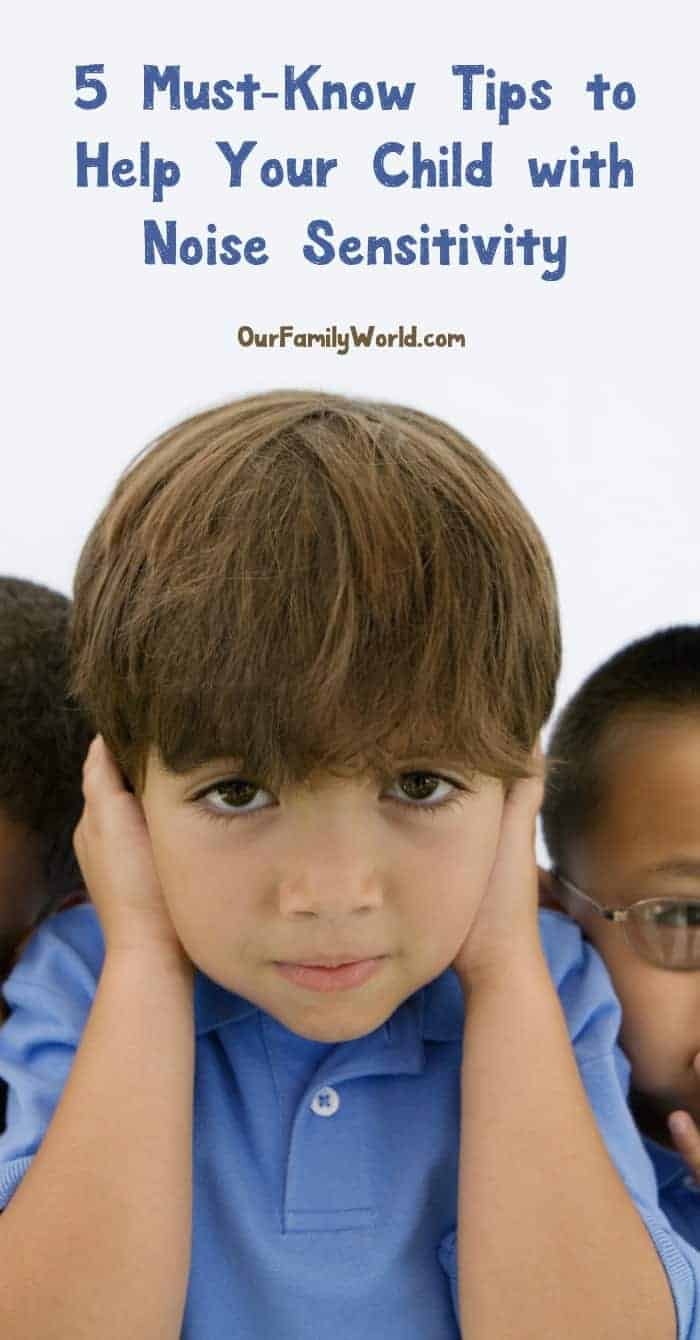Last Updated on January 15, 2025
To help a child with noise sensitivity, encourage them to cover their ears with their hands when it gets too loud. Additionally, provide opportunities for the child to have control over the sounds, such as ringing a bell or starting a music class.
Gentle exposure to the sounds that cause anxiety can also help desensitize the child over time. Encourage them to use an inside voice when indoors, as this can naturally reduce noise sensitivity. It’s important to note that there is usually no cure for noise sensitivity, but avoiding exposure to loud noises can be helpful.
Developing Coping Strategies
To help a child with noise sensitivity, encourage them to use coping strategies such as covering their ears with their hands when things get too loud. Giving them control over the sounds, such as ringing the school bell or starting music class, can also be helpful.
Gradual exposure to the noises that trigger their sensitivity can eventually desensitize them and reduce anxiety.
Teach The Child To Cover Their Ears With Their Hands When It Gets Too Loud
Covering your ears with your hands is a quick way to cope when things get too loud. Double up the noise reduction by placing your hands on top…
Encourage The Use Of Noise-canceling Headphones Or Earplugs In Noisy Environments
Noise-canceling headphones or earplugs can be great tools for blocking out excessive noise in loud environments. Encourage your child to use them…
Practice Deep Breathing Exercises To Help The Child Relax In Noisy Situations
Deep breathing exercises are effective in helping the child relax and reduce anxiety in noisy situations. Teach them to take slow, deep breaths…
Providing Distraction Techniques
To help a child with noise sensitivity, distraction techniques can be useful. Encourage them to engage in activities like playing music or using instruments, giving them some control over the sounds. Gently expose them to the triggering sound over time to help reduce their anxiety and desensitize their auditory sensitivity.
When it comes to helping a child with noise sensitivity, providing distraction techniques can play a crucial role in alleviating their anxiety and discomfort. By giving the child some control over the sounds they encounter, you can empower them and help them feel more comfortable in their environment.
Give The Child Some Control Over The Sounds They Encounter By Allowing Them To Ring The School Bell Or Start The Music Class
One effective way to provide control is by allowing the child to ring the school bell or start the music class. This not only gives them a sense of responsibility but also helps them feel like an active participant in their environment. By giving them this power, they can learn to manage and control the sounds around them, gradually building their tolerance and confidence.
Engage The Child In Activities That Involve Making Noise, Such As Playing Musical Instruments Or Listening To Music
Engaging the child in activities that involve making noise can be another helpful distraction technique. Encourage them to play musical instruments or listen to music. This allows them to focus on the pleasant sounds they are creating or hearing, diverting their attention away from the loud and overwhelming noises that trigger their sensitivity.
Use Visual Distractions, Such As Fidget Toys Or Sensory Bottles, To Divert The Child’s Attention From Loud Sounds
Visual distractions can also be incredibly beneficial in diverting the child’s attention from loud sounds. Utilize fidget toys or sensory bottles that are visually engaging. These objects can captivate the child’s attention and provide them with a calming and soothing distraction, allowing them to remain focused on something other than the noise that may trigger their sensitivity.
Gradual Exposure Therapy
Gradual exposure therapy is a highly effective method to help a child with noise sensitivity. This approach involves gradually exposing the child to sounds that trigger their sensitivity in a controlled and supportive environment. By following a few essential steps, parents and caregivers can help their child build tolerance towards these sounds, ultimately improving their quality of life.
Gradually Expose The Child To Sounds That Trigger Their Sensitivity In A Controlled And Supportive Environment
The first step in gradual exposure therapy is to identify the specific sounds that trigger the child’s sensitivity. This could include loud noises such as sirens, fireworks, or even everyday sounds like vacuum cleaners or kitchen appliances. Once these triggers are identified, create a controlled and supportive environment where the child feels safe.
For example, if the child is sensitive to the sound of fireworks, you can start by playing a recording of fireworks at a low volume in a comfortable setting. This controlled exposure allows the child to become familiar with the sound without feeling overwhelmed.
Start With Lower-level Sounds And Gradually Increase The Volume Or Intensity Over Time
Once the child becomes comfortable with the initial exposure, gradually increase the volume or intensity of the triggering sound. This should be done in small increments, taking the child’s comfort level into consideration. Each session should build upon the previous one, gradually exposing the child to higher levels of sound.
For example, if the child is sensitive to vacuum cleaner noise, start by turning it on at a low setting for a short duration. As the child becomes more accustomed to the sound, gradually increase the duration and intensity of the vacuum cleaner to help them build tolerance.
Offer Reassurance And Support Throughout The Exposure Process To Help The Child Build Tolerance Towards The Sounds
Throughout the exposure process, it is crucial to offer reassurance and support to the child. Let them know that they are safe and that you are there to support them. Encourage them to express their feelings and validate their emotions.
Offering positive reinforcement and rewards can also help motivate and encourage the child during the exposure process. This can be as simple as verbal praise or small treats for their efforts and progress. It is essential to be patient and understanding, allowing the child to set their pace.
By following the gradual exposure therapy approach, parents and caregivers can help a child with noise sensitivity gradually build tolerance towards the sounds that trigger their sensitivity. Remember, each child is unique, and it is essential to tailor the exposure process to their specific needs and comfort levels.

Credit: www.ourfamilyworld.com
Frequently Asked Questions Of How To Help A Child With Noise Sensitivity?
Is Sound Sensitivity Adhd Or Autism?
Sound sensitivity can be associated with both ADHD and autism, although not everyone with these conditions experiences it. It is often a comorbid symptom, meaning it coexists with other conditions such as autism or misophonia. Helping a child with sound sensitivity can involve techniques such as using ear defenders, exposure therapy, providing distractions, and allowing them to have some control over the sounds they hear.
There is no cure for sound sensitivity, but managing exposure to loud noises can help alleviate symptoms.
How Do You Cure Noise Sensitivity?
To help cure noise sensitivity, there is usually no cure once it has started. However, avoiding exposure to noise can help. It’s important to assess the ears for any treatable disorders that could be mistaken for hyperacusis. Gradual desensitization through a program and using ear defenders can assist the student in becoming used to noise.
Encouraging children to use an inside voice when indoors and providing distraction techniques can also help.
How Do You Desensitize Auditory Sensitivity?
To desensitize auditory sensitivity, try these strategies: 1. Use a visual timer to help the individual stay in a noisy environment gradually. 2. Allow them to wear ear defenders to reduce noise input as part of a desensitization program. 3.
Expose them to the sound repeatedly in a gentle manner to reduce anxiety. 4. Encourage them to use an inside voice when indoors to become accustomed to different noise levels. 5. Provide opportunities for the individual to have control over sounds, such as ringing a school bell or starting a music class.
How Do You Deal With Sound Sensory Overload?
To deal with sound sensory overload, try these tips: 1. Cover your ears with your hands when it gets too loud. 2. Double up on noise reduction by placing your hands on top. 3. Give the child some control over sounds, like ringing a bell or starting a music class.
4. Expose them to the sound gently and repeatedly to reduce anxiety. 5. Encourage using an inside voice while playing and talking indoors. Remember, there is usually no cure for noise sensitivity, but avoiding exposure to loud noise can help.
How Can I Help My Child With Noise Sensitivity?
If your child is sensitive to noise, there are a few things you can do to help. Encourage them to cover their ears with their hands when it gets too loud. You can also provide them with noise reduction headphones or ear defenders to help block out excessive noise.
Conclusion
Helping a child with noise sensitivity requires a combination of strategies to reduce anxiety and provide a sense of control. Encouraging the child to use distraction techniques or engage in activities where they can make noise can help alleviate their discomfort.
Gradual exposure to sounds can also desensitize their auditory sensitivity over time. While there may not be a cure for noise sensitivity, avoiding exposure to loud noises and seeking prompt assessment for other treatable ear disorders is important. Remember, providing support and understanding to the child is crucial in helping them navigate their noise sensitivity.

